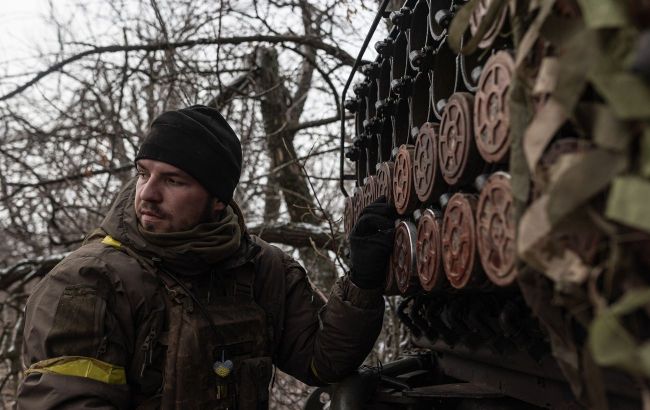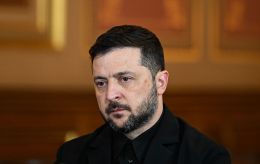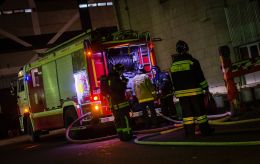Russia plans major offensive? What to expect on frontline
 Photo: Russia is preparing for a new offensive in 2025 (Getty Images)
Photo: Russia is preparing for a new offensive in 2025 (Getty Images)
Russia is likely preparing for a new offensive to improve its negotiating position. Potential attacks on northeastern Ukraine, including Sumy, Kharkiv, and Zaporizhzhia regions, cannot be ruled out. However, they are unlikely to be as large-scale as some Western media reports suggest.
What is known about Russia's new offensive and what forces the enemy may deploy - read in the material by RBC-Ukraine below.
What is known about Russia’s possible new offensive
Recently, there have been reports about Russia's preparations for a new large-scale offensive against Ukraine, one of which was published by the Associated Press (AP).
Citing Ukrainian government officials, military personnel, and analysts, AP stated that the offensive could begin in the coming weeks and last six to nine months, or almost all of 2025. According to the report, the Kremlin aims to launch an attack along the 1,000-kilometer frontline to strengthen its bargaining position in ceasefire negotiations.
Ukrainian officials and military analysts expect the main assaults to target northeastern regions, particularly Sumy, Kharkiv, and Zaporizhzhia. President Volodymyr Zelenskyy also addressed these concerns.
"According to our intelligence, Russia is getting ready for new offensives against the Sumy, Kharkiv, and Zaporizhzhia regions. They’re dragging out the talks and trying to get the US stuck in endless, pointless discussions about fake 'conditions' just to buy time and then try to grab more land," he stated at the Paris summit on March 27.

Map: Ukrainian Armed Forces' actions in Belgorod and Kursk regions are preventive measures to disrupt Russia's plans to prepare operations against Ukraine (google.com/maps)
The Commander-in-Chief, along with Armed Forces Chief Oleksandr Syrskyi, reported increased Russian attacks in these directions, including sabotage groups and border breach attempts.
President Volodymyr Zelenskyy also recalled that Russia had planned an operation eight months ago, but Ukraine managed to halt it through military actions in the Kursk direction. Now, the enemy is once again amassing forces.
Some Ukrainian commanders, as reported by AP, are concerned that Moscow may redeploy battle-hardened troops from the Kursk front to other areas in eastern Ukraine.
However, analysts, including those from the Institute for the Study of War (ISW), believe that Russia is unlikely to shift forces from Kursk for an advance toward Sumy. They argue that Russia lacks operational reserves for a large-scale offensive, as all available forces are engaged in the other areas of the front.
Analysts also point out that Russia does not have enough troops to launch offensives against major cities like Sumy, Kharkiv, or Zaporizhzhia. The Russian army has suffered significant personnel and equipment losses over the years. Since winter 2022, it has not demonstrated the capability to conduct complex multi-directional offensives.
Potential Russian offensive: Expert assessment
Military expert Pavlo Narozhnyy believes that Russian forces will not be able to carry out a large-scale offensive across the entire front, as some media reports suggest.
"The front line is 2,000 km long. If we look at the active combat zones, it’s about 1,200 km. To attack along this front, they would need at least a couple of million soldiers actively engaging in combat. They simply do not have those numbers. At most, they have around 200,000 troops," Narozhnyy told RBC-Ukraine.
According to his estimates, Russia currently has a maximum of 500,000–600,000 troops stationed in occupied territories and along Ukraine’s borders. However, not all of them are engaged in combat - only about a third.
"A Russian offensive will happen, but the key questions are where it is most likely and its real scale. I believe they could concentrate 50,000–60,000 troops for an offensive on a specific section of the front," Narozhnyy stated.
As for the target, the expert does not rule out an offensive in Donbas, but notes that Russian forces are heavily bogged down near Pokrovsk.

Russian forces have logistical problems near Pokrovsk (deepstatemap)
"I wouldn't say that they have any prospects - I wouldn't say that they can somehow change the situation there. It's also difficult to say something about the direction of Sumy and Kharkiv. This is a likely direction," says Narozhnyy.
According to him, a Russian offensive in the Sumy and Kharkiv directions remains possible, but Ukraine is actively working to prevent or weaken it. The presence of a Ukrainian foothold in Russia’s Kursk region plays a key role in this effort.
"Additionally, if we look at what is happening in the Belgorod region, there are also incursions into Russian territory. Our aviation is targeting key infrastructure - bridges, crossings, and other supply routes - to make it difficult for Russian forces to launch an offensive from Belgorod, which borders Sumy and Kharkiv regions," he explained.
Narozhnyy believes that if a Russian offensive occurs, it is likely to happen in May, when weather conditions improve. Until then, localized battles will continue but without large-scale offensives.
"We cannot fully prevent the offensive, but we can stop it - that is realistic," he added.
President Volodymyr Zelenskyy previously stated that Russia is amassing forces along Ukraine’s eastern border, signaling a potential attack on the Sumy region.
Andriy Kovalenko, head of Ukraine’s Center for Countering Disinformation, later confirmed that Russian forces are increasing activity in the border areas of the Sumy region, but this should not be taken as a direct preparation for an offensive on Sumy.
Meanwhile, Ukrainian border guards report ongoing attempts by small Russian assault groups to infiltrate settlements like Novenke and Zhuravka in the Sumy region. However, Ukraine’s State Border Guard Service assures that no Russian breakthrough has been recorded.
For more details on the frontline situation and the Kremlin’s strategic priorities, read the material by RBC-Ukraine.
Sources: Associated Press, Institute for the Study of War (ISW), statements of President Zelenskyy, DeepState maps, and exclusive commentary from military expert Pavlo Narozhnyy.

